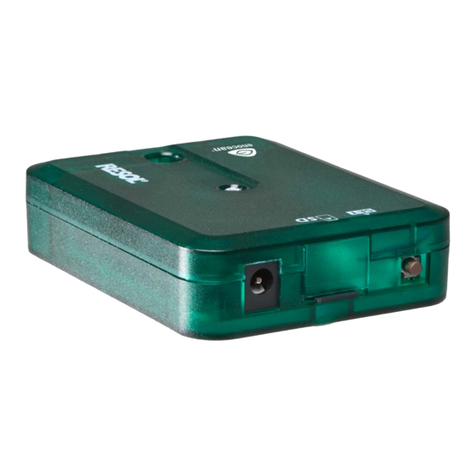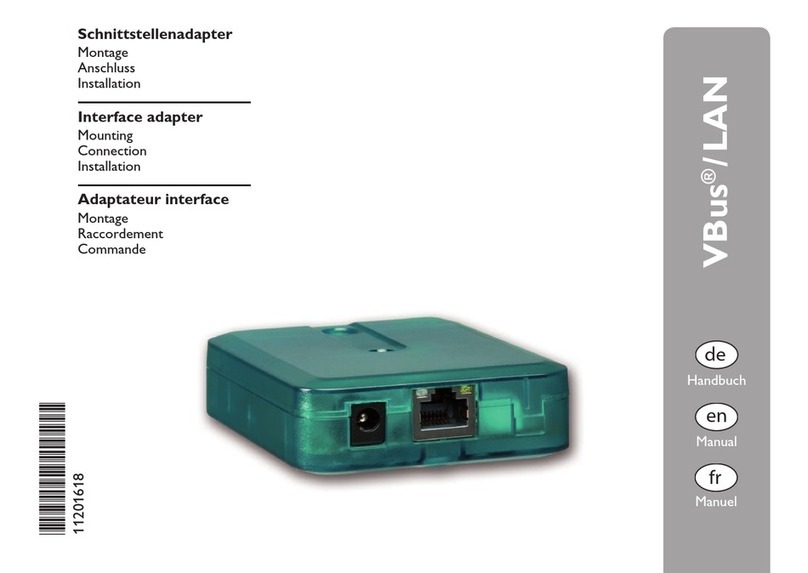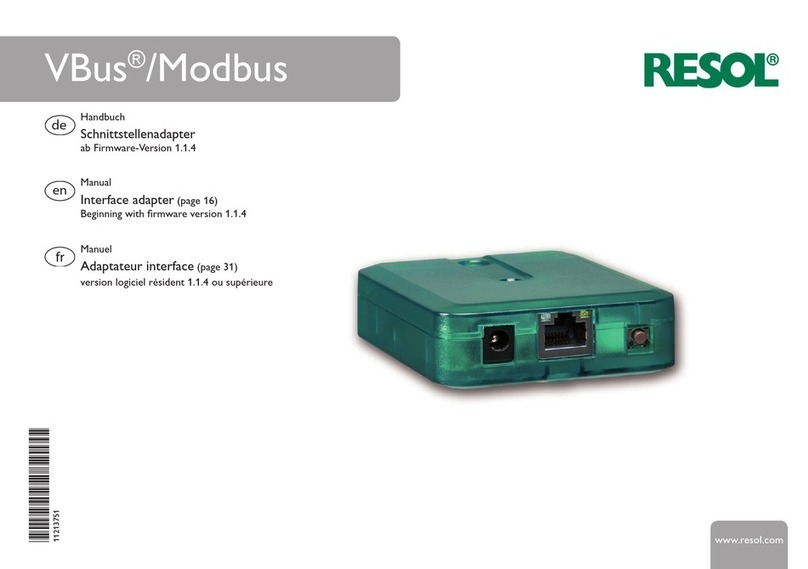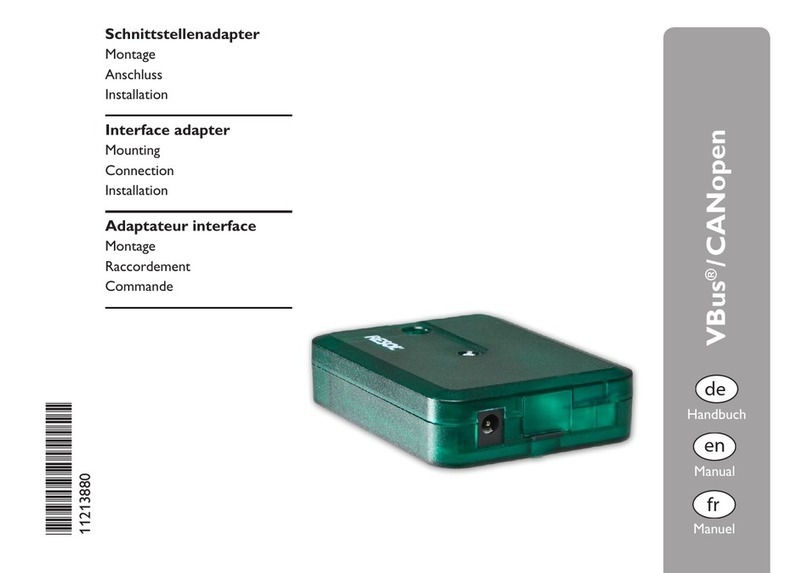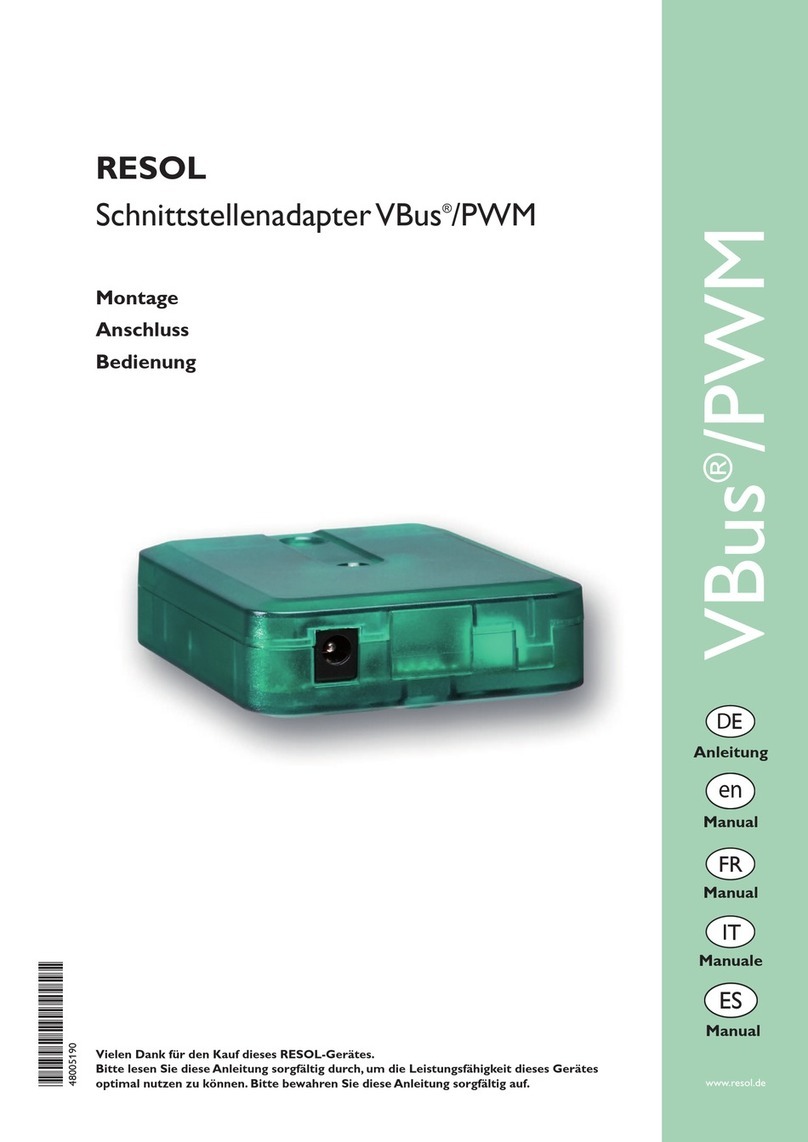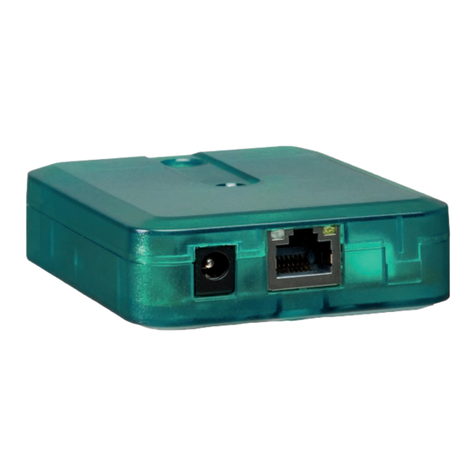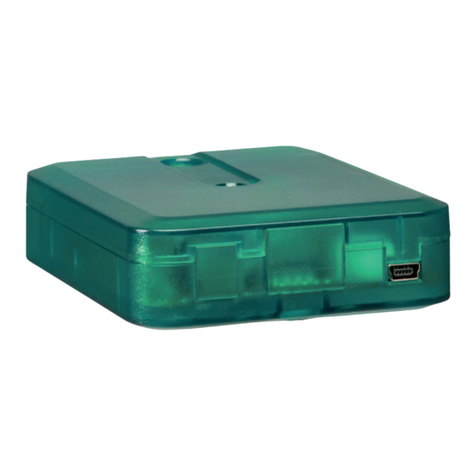
9
de
Da die Anzeige einstellig ist, wird die vordere Dezimalstelle
bei den Relais 10-16 durch einen Punkt ersetzt:
1= Relais 1 9= Relais 9
2= Relais 2 0. = Relais 10
3= Relais 3 1. = Relais 11
4= Relais 4 2. = Relais 12
5= Relais 5 3. = Relais 13
6= Relais 6 4. = Relais 14
7= Relais 7 5. = Relais 15
8= Relais 8 6. = Relais 16
Fehlermeldung
Wenn ein Fehler auftritt, blinkt in der Anzeige ein Fehler-
code:
a= Der Ausgang wurde falsch adressiert.
Das angesteuerte Relais ist nicht vorhanden.
ÎEin gültiges Relais adressieren.
f= DieVBus®-Verbindung ist fehlerhaft.
ÎDieVBus®-Leitung überprüfen.
u= Der angeschlossene Regler wird vom Schnittstel-
lenadapter nicht erkannt.
ÎCa. eine Minute abwarten. Falls die Fehlermeldung
nicht verschwindet, den Hersteller kontaktieren.
8. Wichtiger Hinweis
Die Texte und Zeichnungen dieser Anleitung entstanden mit
größtmöglicher Sorgfalt und nach bestem Wissen. Da Fehler
nie auszuschließen sind, möchten wir auf folgendes hinweisen:
Grundlage Ihrer Projekte sollten ausschließlich eigene Berech-
nungen und Planungen an Hand der jeweiligen gültigen Normen
und Vorschriften sein. Wir schließen jegliche Gewähr für die
Vollständigkeit aller in dieser Anleitung veröffentlichten Zeich-
nungen und Texte aus, sie haben lediglich Beispielcharakter.
Werden darin vermittelte Inhalte benutzt oder angewendet, so
geschieht dies ausdrücklich auf das eigene Risiko des jeweiligen
Anwenders. Eine Haftung des Herausgebers für unsachgemäße,
unvollständige oder falsche Angaben und alle daraus eventuell
entstehenden Schäden wird grundsätzlich ausgeschlossen.
Anmerkungen
Das Design und die Spezikationen können ohne Vorankündi-
gung geändert werden.
Die Abbildungen können sich geringfügig vom Produktionsmo-
dell unterscheiden.
Impressum
Diese Montage- und Bedienungsanleitung einschließlich aller
seinerTeile ist urheberrechtlich geschützt. EineVerwendung au-
ßerhalb des Urheberrechts bedarf der Zustimmung der Firma
RESOL–Elektronische Regelungen GmbH. Dies gilt insbeson-
dere für Vervielfältigungen/Kopien, Übersetzungen, Mikrover-
lmungen und die Einspeicherung in elektronischen Systemen.
© RESOL–Elektronische Regelungen GmbH
